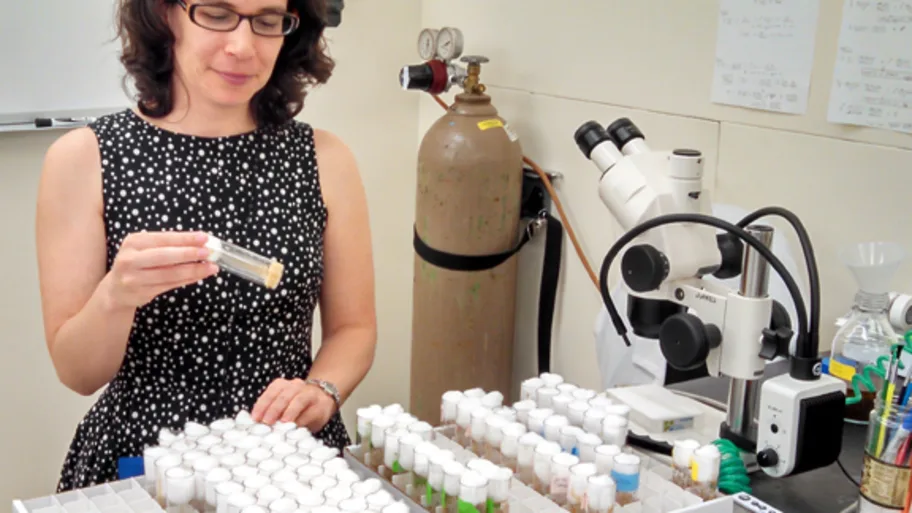
- Science news
- Featured news
- How to write a manuscript: Expert advice on getting published
How to write a manuscript: Expert advice on getting published

By: John R. Porter, Helen Kimbell, Aida Finn, Catarina Alves, and Bhagirath Chauhan
There’s a saying in science – ‘publish or perish’, meaning your ability to pursue a scientific career is highly dependent on the number and quality of papers you produce. In short, publications are your scientific currency. Writing papers helps your results to be confirmed or challenged by other scientists, allowing your findings to help move your field of interest forward.
So how do you write a manuscript?
First, prepare your paper.
The most important thing to remember is the order in which other scientists will read your paper is not the same as the order in which you should prepare it. A good rule at the start of your career is to focus on writing about what you know before drawing up the introduction and summary. Materials and methods come first because writing about these should come naturally – you know this better than anyone else.
Following this will be the results section. This means analyzing and deciding which data you wish to present and then formulating it into tables or graphs. You don’t have to present all the data you’ve collected in your paper. In fact, the current tendency is for much of the data to be attached to the paper as supplementary information. As a rule, you should aim for five to six figures or a combination of figures and tables in the results. If you can’t tell your story in five or six illustrations or tables, then it’s either too long or too complicated.
Discuss.
Okay, now you’re in a position to write up the discussion. This section is about putting your results in the context of other work in the area. In doing this you are following the Mertonian norms of communality and universality.
So, the five questions you need to ask yourself are:
In what area of science are you involved?
What are the up-to-date findings in this area?
What controversies are there in this area?
How do you contribute?
How does this research develop?
Next, start at the beginning.
Once the discussion is complete, you can start writing the introduction – giving the reader a clear idea of why you’re doing this research. This can include issues like describing a new approach to an area or the need to test other work. Often papers that describe a new method get highly cited if they become an established procedure. The introduction is partly a review process, partly a means to interest a reader and partly the rationale for doing the work. It’s a good idea to clearly state your paper’s main findings in no more than two or three sentences at the end of the introduction.
Add the finishing touches.
Now you can add the number of characters, usually specified by the journal. You may also need to provide a short title. Then your final task is to provide a summary (sometimes called an abstract) for the paper. You’ll be asked for four or five keywords too. These are important as they can decide how your paper will be indexed and recorded as a publication – affecting its exposure and the interest it creates. It can be a good idea to ask a colleague what they understand to be the subject of your paper based on the keywords.
And that’s your paper written. Well done. But next comes the publishing process: a series of quality controls on your manuscript. So there are a few checks you can make to help your paper pass safely through.
Does your paper fit the journal?
Most journals have a description of their scope.
Some can be more extensive and specify how many field trials, for example, are required for experiments, or if only laboratory experiments are accepted.
Papers can also be rejected at this initial stage if they’re poorly and / or carelessly assembled – missing a reference list, or referring to figures and tables that are not included in the manuscript, for example. Sometimes it can be difficult to spot mistakes in your own work, so it can be helpful to ask a colleague to look through your paper with a fresh set of eyes. Once you pass this first hurdle your manuscript will be sent to an editor, who will decide whether the paper is good enough to be sent for review.
Is it all your own work?
At this stage, a particularly important quality control is exercised – a plagiarism check. Plagiarism occurs when you copy someone else’s work and claim it as your own. Together with falsifying results, plagiarism is the shortest and fastest route to losing your reputation as a scientist. There are very powerful artificial intelligence machines that will detect plagiarism; they can identify the copied text and show where it originates. Your paper will be rejected, and you might even be banned from publishing in the journal. If you copy, it will be discovered.
Have you made quality checks?
Your paper will then be sent to (usually two) people with knowledge in the relevant area of science, for their assessment of its quality. To help get your paper through this stage, ask yourself:
Is it clearly written, and would it be easy for the reader to understand what you're trying to present?
Do the text, figures and tabled complement each other?
Given the reviews, an editor can decide whether your paper is accepted for the journal or not. Sometimes they can reject it, but invite a revised version that takes account of the comments from the reviewers (sometimes called referees). Assuming your paper is accepted though, the journal will carry out a final round of quality checks before entering the production process. Hopefully, it’ll go on to be published within a short time. Then the scientific community can read it and be impressed by its contribution, its uniqueness, its disinterested approach and its organized skepticism – in short, the Mertonian norms of science.
So, to summarize…
Prepare. Don’t write as it’d be read – do the easy things first.
Keep your paper focused and concise.
Don’t plagiarize.
Check your work. A second pair of eyes is always good too.
Match your paper to an appropriate journal.
Good luck writing your paper (or many of them)!
If you're interested to learn more, please watch the webinar organised by Frontiers in Agronomy led by Prof Bhagirath Chauhan and Prof John R Porter on "How to write a manuscript: expert advise on getting published".
To check our most recent updates and upcoming webinars, we welcome you to follow us on Twitter @FrontAgro .
References
Merton RK (1942) The normative structure of science. In: Merton, RK (ed) The sociology of science: Theoretical and empirical investigations. University of Chicago Press, ISBN 978-0-226-52091-9.
Porter JR & Wollenweber B (2018). Science in an age of (Non) reason. Progress In Science, Progress In Society, Ed. Alain Tressaud, 108 pp. Springer, Cham.
About Frontiers
Frontiers is the 3rd most-cited and 6th largest research publisher. We publish groundbreaking discoveries by the world's top experts. Scientists empower society and our mission is to accelerate scientific discovery by making science open. We place the researcher at the center of everything we do and enable the research community to develop the solutions we need to live healthy lives on a healthy planet. Featuring custom-built technology, artificial intelligence, and rigorous quality standards, our research articles have been viewed more than 2.2 billion times, reflecting the power of research that is open for all.






